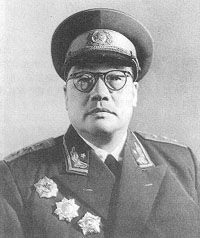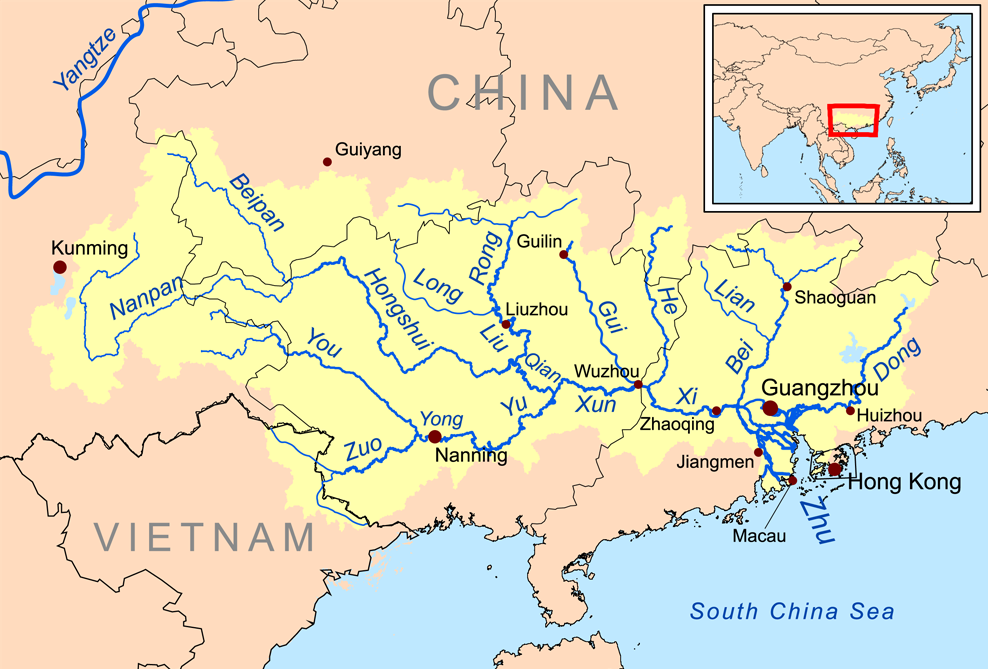|
Pingxiang, Guangxi
Pingxiang () is a county-level city under the administration of the prefecture-level city of Chongzuo, in the southwest of the Guangxi Zhuang Autonomous Region, China. Situation The city covers an area of . It is bordered in the north by Longzhou County and in the east by Ningming County, both in Chongzuo, and in the south and west by Vietnam's Lạng Sơn Province. National Route 322 comes through the city centre, as does the railway which continues on to Hanoi; a high-speed expressway, now also international, passes nearby. Zhennan Pass, site of the Battle of Bang Bo during the Sino-French War, is now named the "Friendship Pass" and is considered the gateway to Vietnam. There are also plans to build a high-speed railway from Nanning to the Vietnamese border. Demographics Pingxiang has a population of approximately 106,400 (83.5% of the people belong to the Zhuang ethnic group, 2010). Ethnic groups include Zhuang, Han, Yao, Miao Miao may refer to: * Miao people, ... [...More Info...] [...Related Items...] OR: [Wikipedia] [Google] [Baidu] |
Postal Code Of China
Postal codes in the China, People's Republic of China () are postal codes used by China Post for the delivery of letters and goods within mainland China. China Post uses a six-digit all-numerical system with four tiers: the first tier, composed of the first two digits, show the provinces of China, province, province-equivalent direct-controlled municipalities of China, municipality, or autonomous regions of China, autonomous region; the second tier, composed of the third digit, shows the postal zone within the province, municipality or autonomous region; the fourth digit serves as the third tier, which shows the postal office within prefectures of the People's Republic of China, prefectures or prefecture-level city, prefecture-level cities; the last two digits are the fourth tier, which indicates the specific mailing area for delivery. The range 000000–009999 was originally marked for Taiwan (The Republic of China) but is not used because it not under the control of the People' ... [...More Info...] [...Related Items...] OR: [Wikipedia] [Google] [Baidu] |
Battle Of Bang Bo
The Battle of Bang Bo, known in China as the Battle of Zhennan Pass ( zh, 鎮南關之役), was a major Chinese victory during the Sino-French War (August 1884 – April 1885). The battle, fought on 23 and 24 March 1885 on the Tonkin-Guangxi border, saw the defeat of 1,500 soldiers of General François de Négrier's 2nd Brigade of the Tonkin Expeditionary Corps by a Chinese army under the command of the Guangxi military commissioner Pan Dingxin ( 潘鼎新). The battle set the scene for the French retreat from Lạng Sơn on 28 March and the conclusion of the Sino-French War in early April in circumstances of considerable embarrassment for France. The Tonkin military stalemate, March 1885 On 17 February 1885 General Louis Brière de l'Isle, the general-in-chief of the Tonkin Expeditionary Corps, left Lạng Sơn with Lieutenant-Colonel Laurent Giovanninelli's 1st Brigade to relieve the Siege of Tuyên Quang. On 3 March, at the Battle of Hòa Mộc, Giovanninelli's men ... [...More Info...] [...Related Items...] OR: [Wikipedia] [Google] [Baidu] |
Shangshi, Guangxi
Shangshi () is a town under the administration of Pingxiang, Guangxi, China China, officially the People's Republic of China (PRC), is a country in East Asia. With population of China, a population exceeding 1.4 billion, it is the list of countries by population (United Nations), second-most populous country after .... , it administers Shangshi Residential Community and the following eight villages: * Pudong Village () * Bailong Village () * Yan'an Village () * Xia'ao Village () * Madong Village () * Lianjiang Village () * You'ai Village () * Banwang Village () References Township-level divisions of Guangxi Pingxiang, Guangxi {{Guangxi-geo-stub ... [...More Info...] [...Related Items...] OR: [Wikipedia] [Google] [Baidu] |
National Bureau Of Statistics Of China
The National Bureau of Statistics () is a deputy-ministerial level agency directly under the State Council of China. Established in August 1952, the bureau is responsible for collection, investigation, research and publication of statistics concerning the nation's economy, population and other aspects of the society. Kang Yi has served as the commissioner of the bureau since 3 March 2022. Responsibilities The bureau's authority and responsibilities are defined in ''Statistics Law of the People's Republic of China''. It is responsible for the research of the nation's overall statistics and oversees the operations of its local counterparts. Organizations The bureau is overseen by a commissioner, several deputy commissioners (currently four), a chief methodologist, a chief economist, and a chief information officer. It is composed of 18 departments, oversees 12 affiliated institutions, and manages 32 survey organizations stationed in respective provinces. It also operates ... [...More Info...] [...Related Items...] OR: [Wikipedia] [Google] [Baidu] |
Jing People
The Gin, or Jing people, (, Sino-Vietnamese: ''Kinh tộc''; ) are a community of descendants of ethnic Vietnamese people living in China. They mainly live in an area called the Jing Islands (京族三岛), off the coast of Dongxing, Fangchenggang, in the Chinese autonomous region of Guangxi. These territories were administered by the Nguyễn dynasty but were later ceded by the French to the Qing dynasty due to the 1887 convention, after the Sino-French war. The Việt were labelled ''Yue'' (, Sino-Vietnamese: ''Việt tộc''; Vietnamese: ''người Việt tại Trung Quốc'') before the introduction of the names "Kinh", "Gin", or "Jing", in 1958. This name change was requested by the Kinh people, who did not want to be associated with the country of Vietnam, as 越/Yue made them look like Vietnamese citizens in China, and thus they chose their ethnic name, the Kinh. The Gin population was 33,112 as of 2020. This number does not include the 36,205 Vietnamese nationals stu ... [...More Info...] [...Related Items...] OR: [Wikipedia] [Google] [Baidu] |
Hmong People
The Hmong people ( RPA: , CHV: ''Hmôngz'', Nyiakeng Puachue: , Pahawh Hmong: , , zh, c=苗族蒙人) are an indigenous group in East Asia and Southeast Asia. In China, the Hmong people are classified as a sub-group of the Miao people. The modern Hmong reside mainly in Southwestern China and Mainland Southeast Asian countries such as Vietnam, Laos, Thailand, and Myanmar. There are also diaspora communities in the United States, Australia, France, and South America. Etymology The term ''Hmong'' is the English pronunciation of the Hmong's native name. It is a singular and plural noun (e.g., Japanese, French, etc.). Very little is known about the native Hmong name as it is not mentioned in Chinese historical records, since the Han identified the Hmong as Miao. The meaning of it is debatable and no one is sure of its origin, although it can be traced back to several provinces in China. However, Hmong Americans and Hmong Laotians often associate it with "Free" and/or "Hmoov ... [...More Info...] [...Related Items...] OR: [Wikipedia] [Google] [Baidu] |
Yao People
The Yao people () or Dao () is a classification for various ethnic minorities in China and Vietnam. Their majority branch is also known as Mien. They originated in the areas around Changsha, which today is the capital of Hunan province. They speak a branch of the Hmong-Mien family of languages and share a strong genetic connection to the Hmong peoples. They are believed to have diverged from the Hmong around 5,800 years ago. They are one of the 56 officially recognized ethnic groups in China and reside in the mountainous southwest and south of the country. They also form one of the 54 ethnic groups officially recognized by Vietnam. They numbered 2,796,003 in the 2010 Chinese census and 891,151 in the 2019 Vietnamese census. An estimated 60,000 Yao of the Iu Mien branch reside in the United States, mostly in the Western coastal states. History China Origin myth The origins of the Yao can be traced back two millennia to Hunan around the Dongting Lake region. According to ... [...More Info...] [...Related Items...] OR: [Wikipedia] [Google] [Baidu] |
Han Chinese
The Han Chinese, alternatively the Han people, are an East Asian people, East Asian ethnic group native to Greater China. With a global population of over 1.4 billion, the Han Chinese are the list of contemporary ethnic groups, world's largest ethnic group, making up about 17.5% of the world population. The Han Chinese represent 91.11% of the population in China and 97% of the population in Taiwan. Han Chinese are also a significant Overseas Chinese, diasporic group in Southeast Asian countries such as Thailand, Malaysia, and Indonesia. In Singapore, people of Han Chinese or Chinese descent make up around 75% of the country's population. The Han Chinese have exerted a primary formative influence in the development and growth of Chinese civilization. Originating from Zhongyuan, the Han Chinese trace their ancestry to the Huaxia people, a confederation of agricultural tribes that lived along the middle and lower reaches of the Yellow River in the north central plains of Chin ... [...More Info...] [...Related Items...] OR: [Wikipedia] [Google] [Baidu] |
Zhuang People
The Zhuang (; ; , , Sawndip: 佈獞) are a Tai-speaking ethnic group who mostly live in the Guangxi Zhuang Autonomous Region in Southern China. Some also live in the Yunnan, Guangdong, Guizhou, and Hunan provinces. They form one of the 56 ethnic groups officially recognized by the People's Republic of China. With the Bouyei, Nùng, Tày, and other Northern Tai speakers, they are sometimes known as the Rau or Rao people. Their population, estimated at 18 million people, makes them the largest minority in China. Etymology The Chinese character used for the Zhuang people has changed several times. Their autonym, "Cuengh" in Standard Zhuang, was originally written with the graphic pejorative , (or ''tóng'', referring to a variety of wild dog).漢典.獞. Chinese. Accessed 14 August 2011. 新华字典, via 中华昌龙网. 字典频道.". Chinese. Accessed 14 August 2011. Chinese characters typically combine a semantic element or radical and a phonetic element. John De ... [...More Info...] [...Related Items...] OR: [Wikipedia] [Google] [Baidu] |





